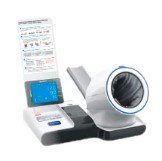Benefits of Digital Radiography in Medical Laboratories and Phlebotomy Practices
Summary
- Improved efficiency in medical laboratories and phlebotomy practices
- Enhanced patient care through quicker Test Results
- Increased accuracy and reduced risk of human error
Introduction
Medical laboratories and phlebotomy practices play a crucial role in the healthcare industry by providing valuable diagnostic information to aid in patient care. With advancements in technology, digital radiography has become a game-changer in streamlining processes and improving efficiency in these settings. In this article, we will discuss the benefits of implementing digital radiography in medical laboratories and phlebotomy practices in the United States.
Improved Efficiency
One of the primary benefits of implementing digital radiography in medical laboratories and phlebotomy practices is the improved efficiency it offers. Traditional film-based radiography requires time-consuming processes such as developing and transferring images, which can lead to delays in providing Test Results. With digital radiography, images are captured instantly and can be viewed and shared electronically, eliminating the need for physical film and reducing processing time.
- Quicker image acquisition and processing
- Instant access to images for Healthcare Providers
- Reduction in wait times for patients
Enhanced Patient Care
Another significant benefit of digital radiography in medical laboratories and phlebotomy practices is the enhanced patient care it enables. Quicker access to Test Results allows Healthcare Providers to make timely decisions regarding patient treatment plans, leading to improved outcomes. Additionally, digital images can be easily stored and accessed for future reference, ensuring continuity of care for patients.
- Timely diagnosis and treatment for patients
- Improved communication between Healthcare Providers
- Ability to track and compare images over time
Increased Accuracy
Digital radiography also offers increased accuracy in medical laboratories and phlebotomy practices, reducing the risk of human error associated with traditional film-based methods. Digital images can be enhanced and manipulated to improve visibility and clarity, leading to more accurate interpretations by Healthcare Providers. Additionally, digital systems can automatically flag potential issues or abnormalities in images, helping to ensure thorough and accurate diagnoses.
- Enhanced image quality for better visualization
- Automated tools for image analysis and interpretation
- Reduced risk of errors in image capture and processing
Conclusion
Overall, the implementation of digital radiography in medical laboratories and phlebotomy practices in the United States offers a wide range of benefits, including improved efficiency, enhanced patient care, and increased accuracy. By harnessing the power of digital technology, Healthcare Providers can streamline processes, provide better care to patients, and achieve more accurate diagnostic results. As technology continues to advance, the use of digital radiography is expected to become increasingly prevalent in healthcare settings, further revolutionizing the way medical tests are conducted and results are delivered.

Disclaimer: The content provided on this blog is for informational purposes only, reflecting the personal opinions and insights of the author(s) on the topics. The information provided should not be used for diagnosing or treating a health problem or disease, and those seeking personal medical advice should consult with a licensed physician. Always seek the advice of your doctor or other qualified health provider regarding a medical condition. Never disregard professional medical advice or delay in seeking it because of something you have read on this website. If you think you may have a medical emergency, call 911 or go to the nearest emergency room immediately. No physician-patient relationship is created by this web site or its use. No contributors to this web site make any representations, express or implied, with respect to the information provided herein or to its use. While we strive to share accurate and up-to-date information, we cannot guarantee the completeness, reliability, or accuracy of the content. The blog may also include links to external websites and resources for the convenience of our readers. Please note that linking to other sites does not imply endorsement of their content, practices, or services by us. Readers should use their discretion and judgment while exploring any external links and resources mentioned on this blog.
